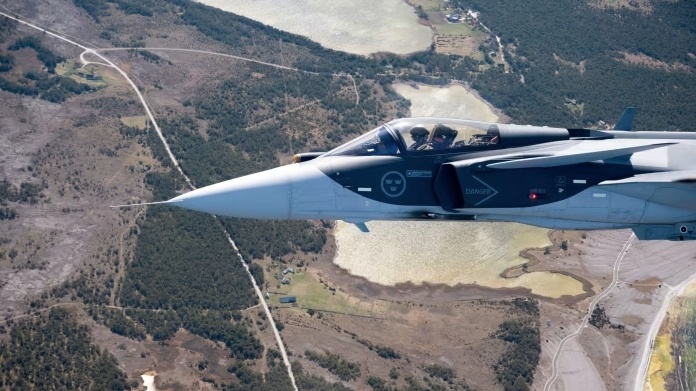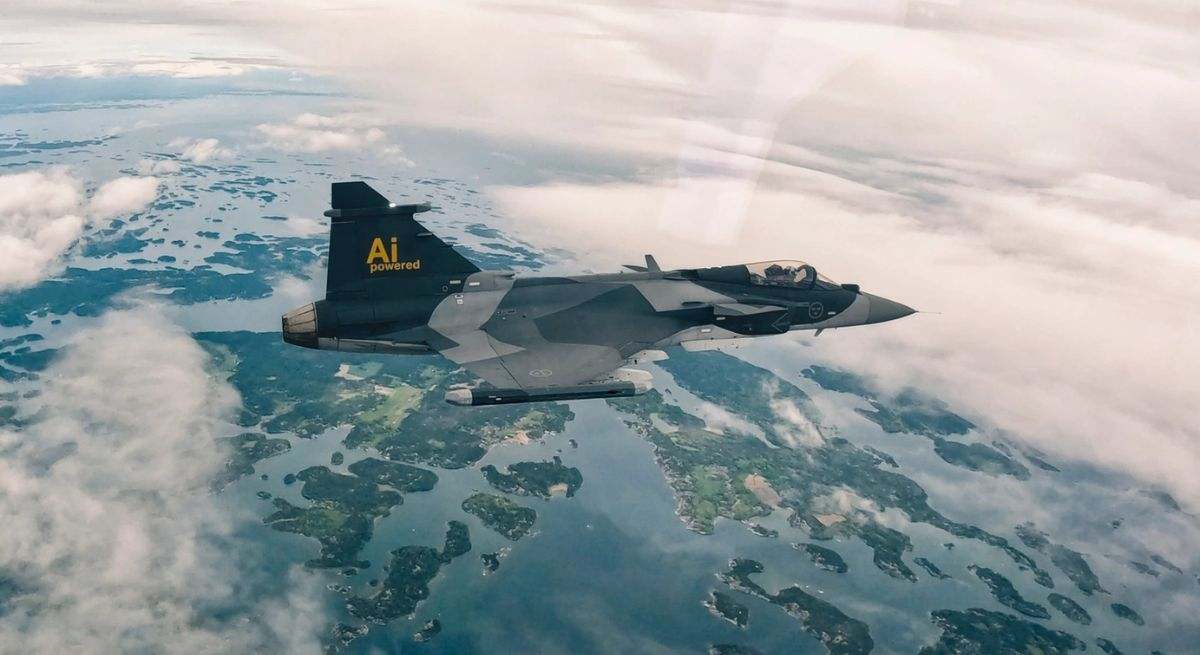Two companies funded by the Swedish government have achieved a milestone in aviation history. And to be sure, they did it twice. Between May and June, the Centauro artificial intelligence developed by Helsing piloted a Gripen E fighter jet manufactured by Saab with full autonomy and without human intervention. The latest test successfully simulated a battle against another fighter jet piloted by a human pilot.
The news represents a giant leap forward for the aerospace industry. By fully integrating AI into the operation of a conventional fighter jet such as the Gripen, companies such as Saab and Helsing will lower the cost of future upgrades to global air fleets. The development paves the way for pilots to have a fleet of drones at their command in air operations in the coming years.
A pilot in six months
Helsing is a German start-up that is revolutionising military technology. Even the co-founder of Spotify, Daniel Ek, has doubled his investment in the latest round of financing estimated at 600 million euros. The success of the Gripen project heralds the arrival of future artificial intelligence programmes in the coming years.

In the case of the Gripen project, the most significant aspect has been the speed with which Saab, Sweden’s leading arms manufacturer, and Helsing have integrated the Centauro system into a combat aircraft. ‘It took us less than half a year to go from defining the operational scenario to configuring the software interfaces, training, integration and agent testing, to take-off and test flight,’ said Marcus Wandt, Saab’s director of innovation and the test pilot who was in the AI-controlled Gripen, in a statement. ‘This is the future of air combat happening right now, in Europe,’ he added.
Beyond the superlative messages about the success of the project, Helsing and Saab have highlighted the speed with which combat-ready artificial intelligence can be “trained”. Its applications in the near future in coordination with human pilots are wide-ranging: combat assistance, training support, flight control, etc.
Hybrid combat
Stephanie Lingemann, director of Air Dominance at Helsing, told the Financial Times that the programme’s success shows how fast the technology industry is advancing in defence: ‘You can achieve superhuman performance very quickly [with AI], react to new circumstances… and you don’t have to send your pilots into dangerous situations. That’s why this is so revolutionary.’
Despite the enthusiasm, Helsing does not envisage a sudden replacement of pilots in military aviation. ‘I think we will see both for decades to come,’ Lingemann said. ‘And then, gradually, operators will move into different roles.’

Various air powers are developing plans similar to the Swedish fighters, seeking to develop integrated air systems with artificial intelligence and unmanned aircraft. Trump‘s tax reform will inject $16 billion into US military artificial intelligence and drone programmes. Putin announced that the Russian Armed Forces will have a new drone division, on the same level as the Navy, Army and Nuclear Forces. China is using DeepSeek to create tens of thousands of combat simulations in minutes.
Sixth-generation fighter programmes envisage the interoperability of drones and pilots in combat aircraft. The idea is that unmanned vehicles will behave as squadron mates to human pilots in military operations. Programmes such as the US F-47, the European FCAS and the British Tempest seek to renew current air fleets with these new systems.

